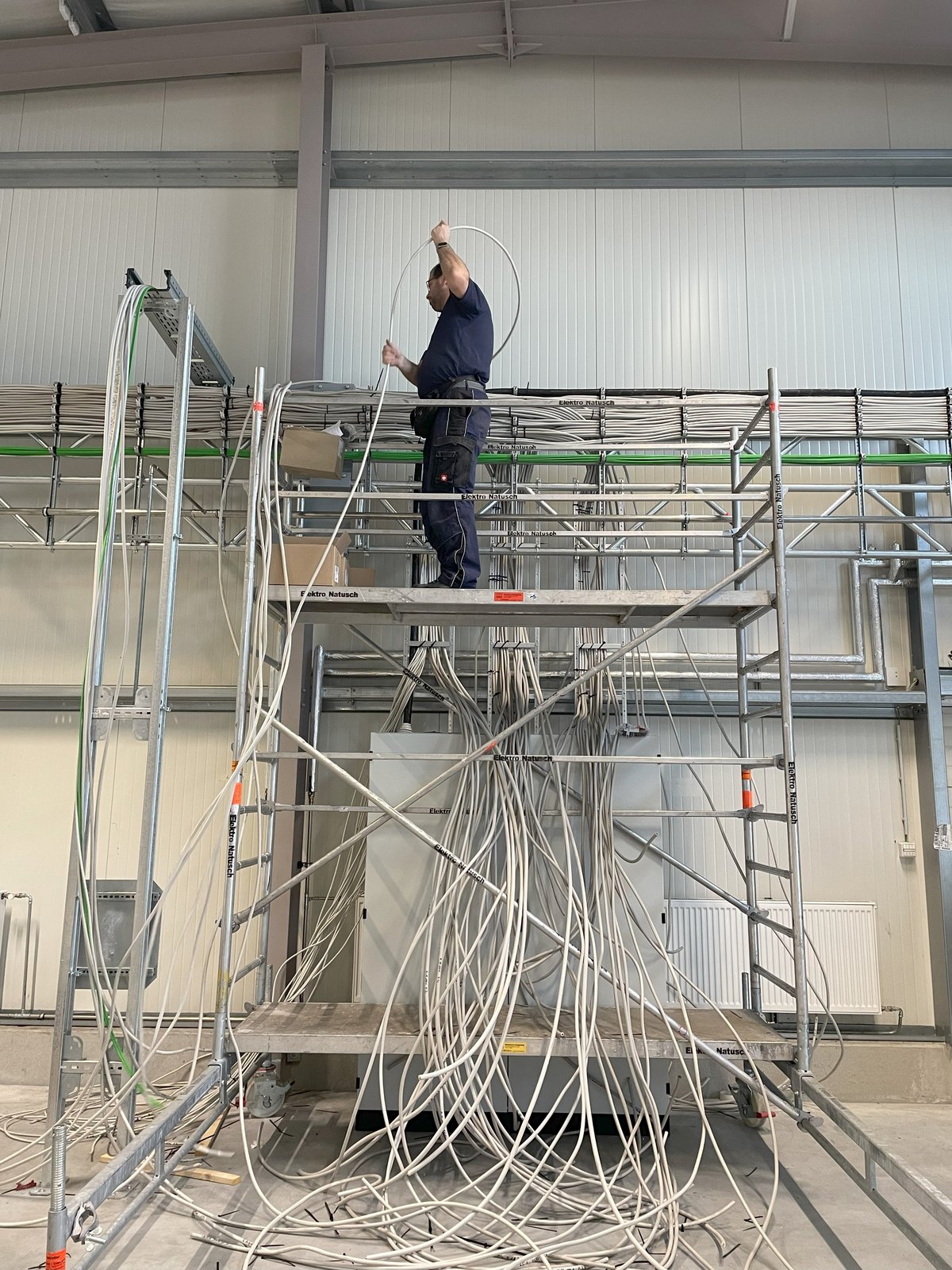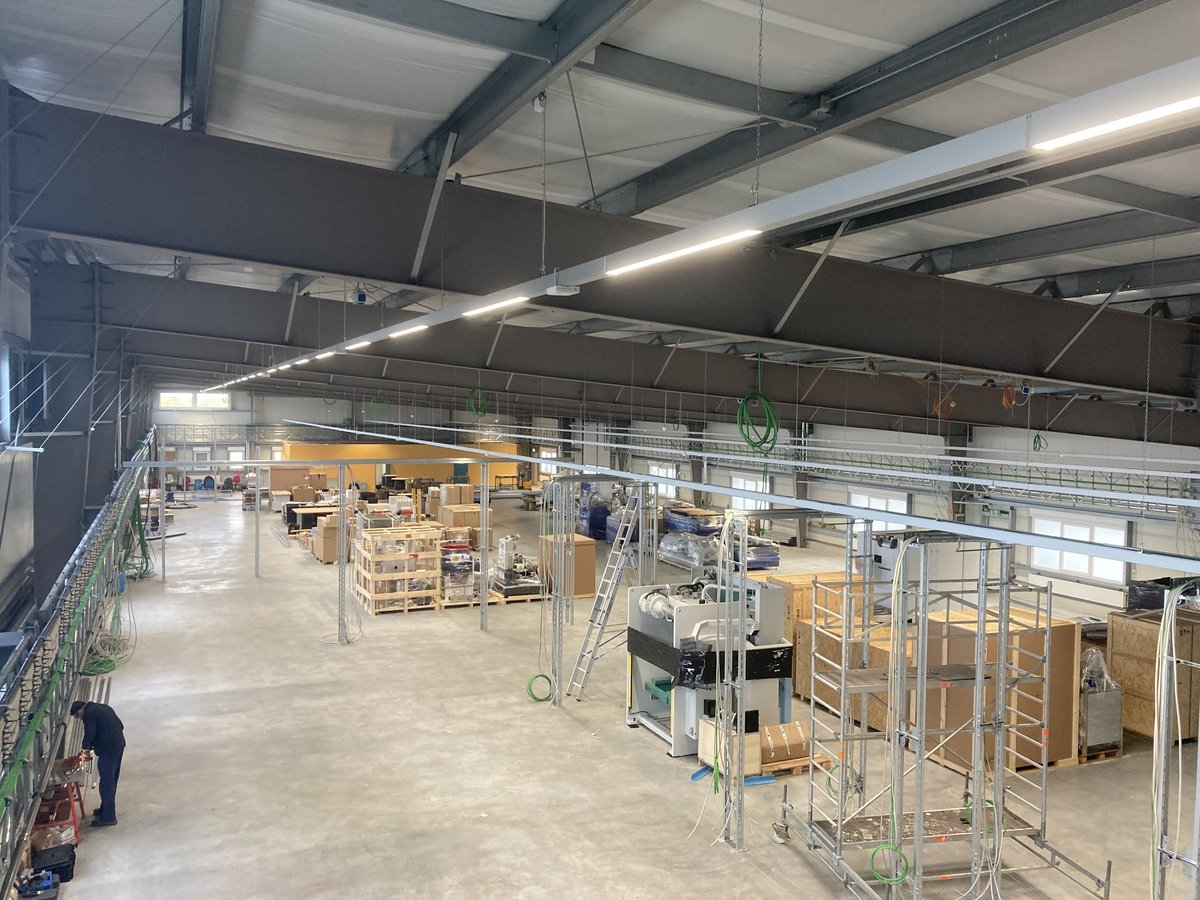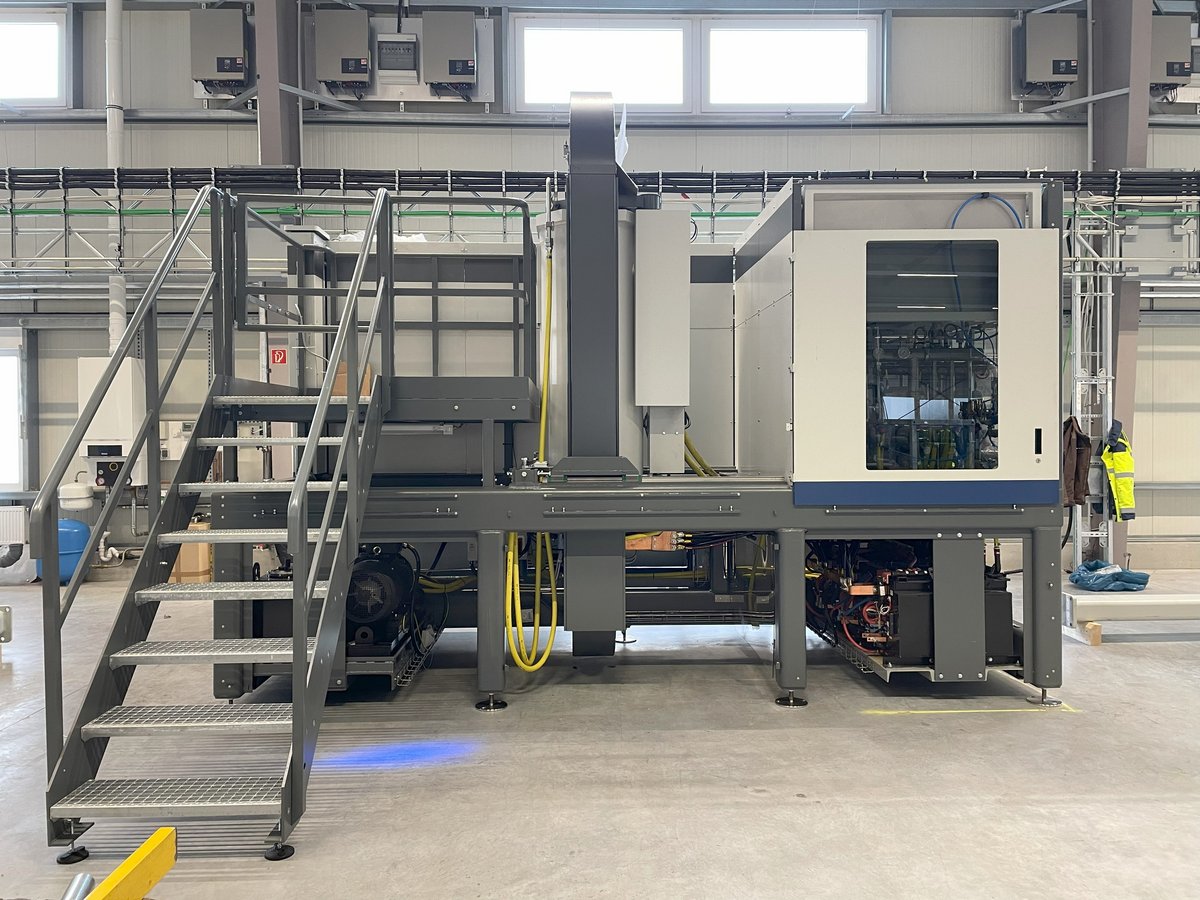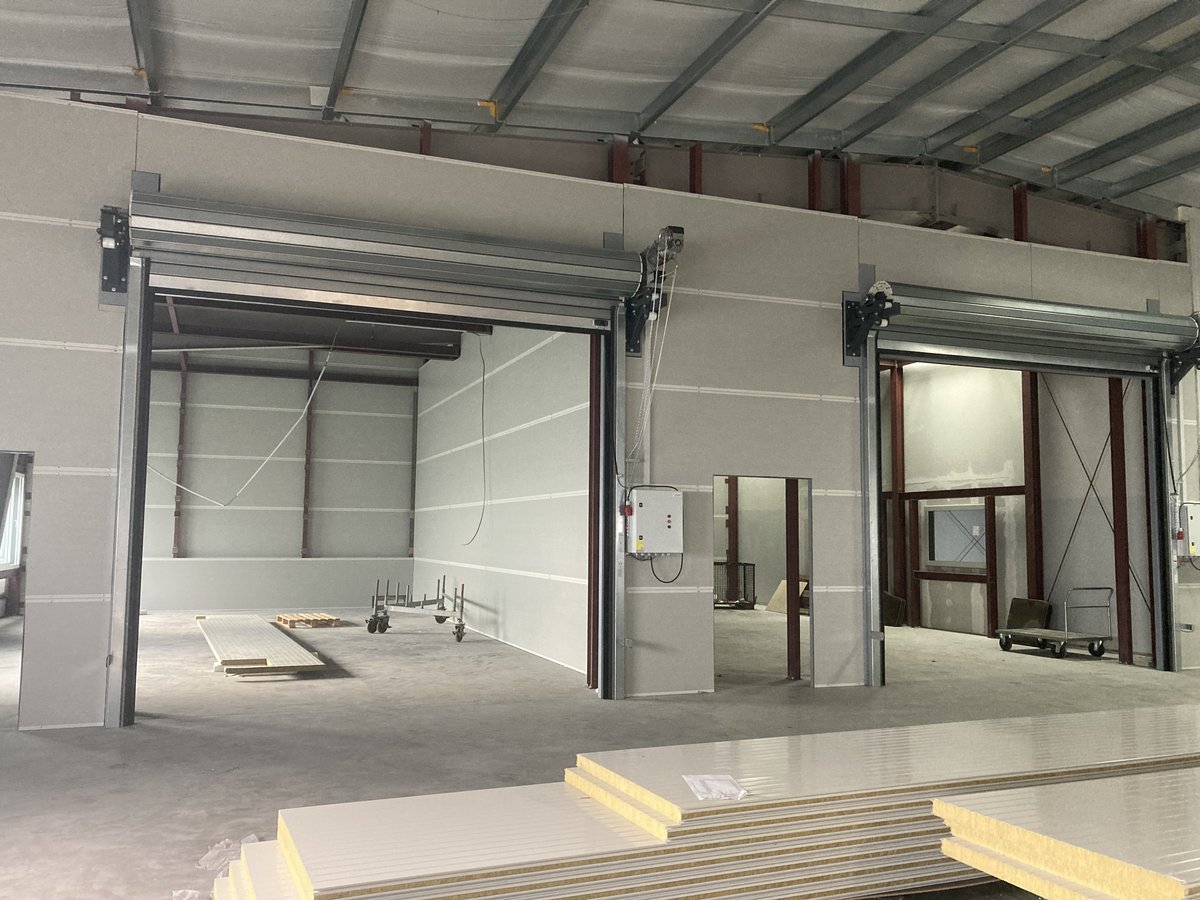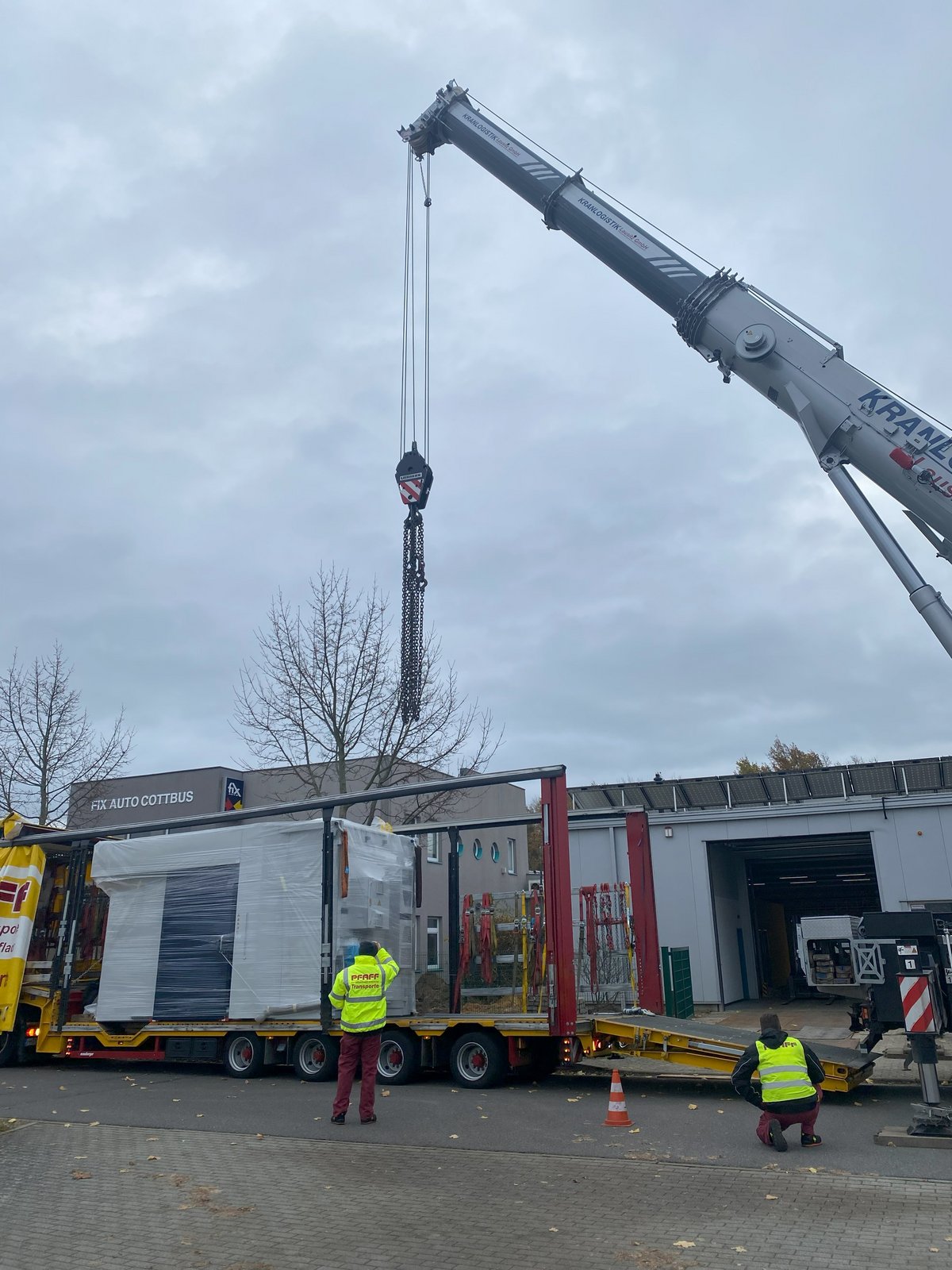Update on the set up of the chesco research factory
Over the past three months, the chesco research factory has continued to fill up with machines. At the contact conference in September, the conference participants were already able to marvel at some of them. Since then, further deliveries have been made every week and the expansion of the infrastructure in the halls has also progressed. By the time the chesco research factory opens in May 2024, around 100 machines will have found their place in the production area, creating an innovative and agile manufacturing environment. The equipment includes systems and machines for the treatment of raw materials, for fixture construction, for additive manufacturing, for inspection and analysis, for machining, for heat treatment and for sintering as well as for the production of electric drive components.
The machine park grew over the last three month
The Wanner granulator was delivered at the beginning of September. It is capable of shredding plastics such as sprues or faulty parts and preparing them for further thermal processing. This leads to a more resource-efficient production cycle and, in this context, can also encourage the sustainable use of raw materials. At the beginning of October, we also received a twin-screw extruder. This is used to melt granulate and build up pressure, as well as to incorporate fillers, colorants and reinforcing materials. This machine therefore also supports sustainable work with plastics.
Shortly afterwards, in mid-October, the press brake from Hezinger was delivered. The press brake is one of the classic machines in the sheet metal working industry and is used to bend metals of different shapes, sizes and thicknesses. As we want to offer our partners a wide range of options, it is crucial that we can also guarantee the processing of a wide variety of materials. The metal area is complemented by the laser welding and cutting machine, which was delivered at the end of October. Laser welding and cutting devices can be used universally. This equipment can be used in almost any industrial production process. In addition, we guarantee production with fewer rejects and faster production times.
We received two special machines at the end of November. The two Yxlon X-ray CT machines had to be delivered by heavy-duty transport and crane. These systems make it possible to analyze and inspect components in detail. The CT inspection can determine whether there are any defects inside the component. For example, inclusions or cavities in the object can be detected and the structure of the material can be analyzed. This means that the highest quality standards can be maintained. We were also supplied with a part of the hot isostatic press (HIP). This press is a basic requirement in the aerospace industry in order to increase the hardness and performance of components. As the first research projects of the chesco research factory are starting in the field of innovative drive systems for aviation, this system is indispensable for our machine park.
In order for the machinery to be used, the appropriate power supply is required. To this end, our team significantly expanded the infrastructure of the research factory. At the beginning of October, the 400 volt transformers were brought in and the installation of the transfer stations in the outdoor area was completed. The installation of the media columns and the laying of the cables in the interior were completed. But work is not only being carried out in the production area. Progress is also being made in the test area. The planking of the walls has been completed and the area for testing electrical components is now recognizable as a separate part of the hall.
With the progress in the expansion of the chesco research factory, some machines can soon be unpacked and put into operation. The first machines are due to be connected to the power grid on December 15th.

